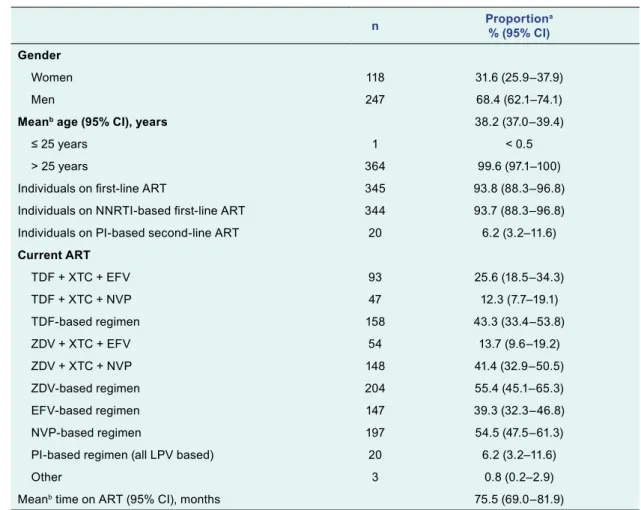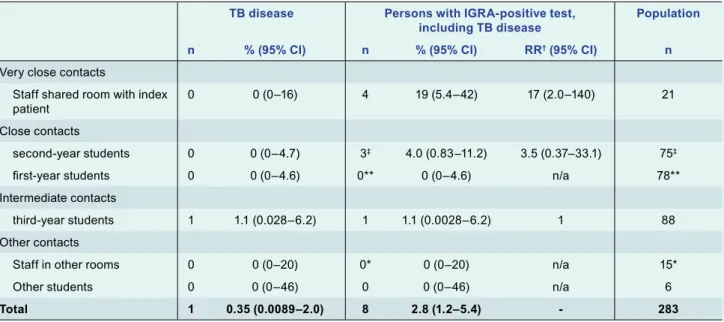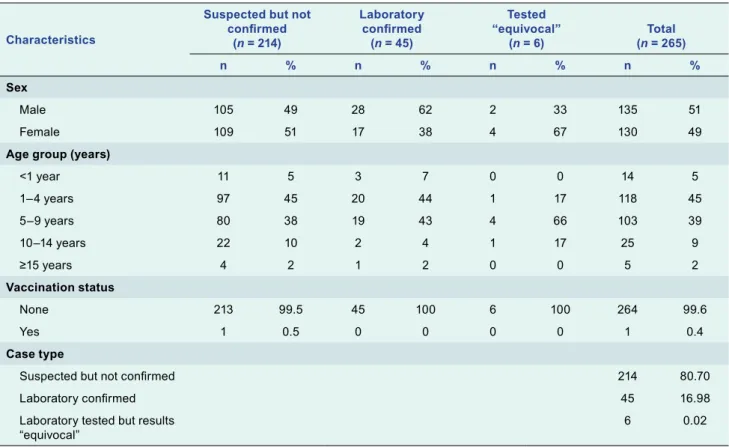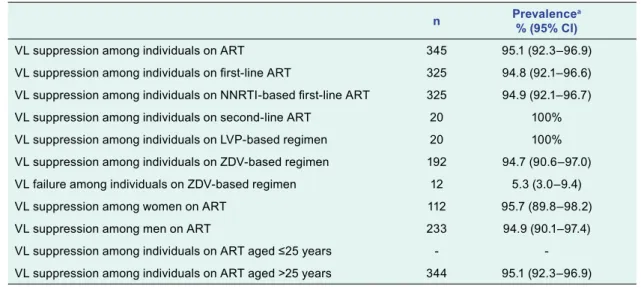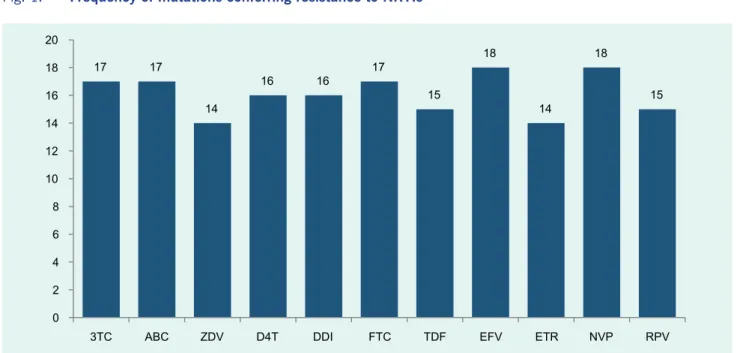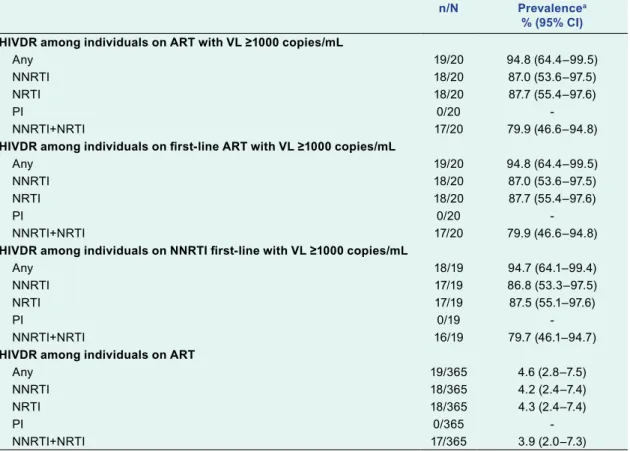At the conclusion of the ToT, participants positively rated their satisfaction with the event and knowledge change; the only negative comments were requests for more time. A Cochran-Armitage test was performed to determine if there was a trend between groups' positivity. However, 19 of the other contacts, mostly administrative staff, who had no contact with the index patient were tested by CXR alone in May 2012.
The age groups of the IGRA positive students and the staff members were 20–29 years and 40–49 years respectively. Characteristics of the TB contacts of a nursing school and types of screening tests performed, Kanagawa, Japan, 2011–2013. The majority of people with suspected measles (n and all those confirmed were unvaccinated.
A measles vaccination campaign conducted in the eight affected villages resulted in 76% coverage of the targeted population. Vaccination status was reported either by the patient, caregiver, or parents present at the time of the study. Despite reductions in measles incidence since the start of measles vaccination in 1979,14 several sporadic and widespread measles outbreaks have been reported in the Lao Democratic Republic.
We describe the characteristics of the outbreak with the aim of identifying critical interventions for the Lao People's Democratic Republic to achieve measles elimination status.
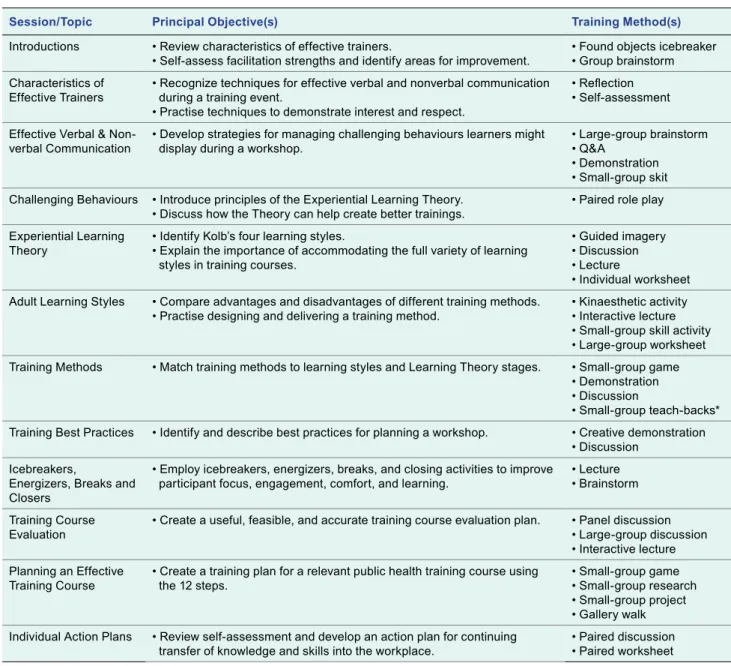
RESULTS
All four confirmed patients from Hinteng Village in Khouan District and Phanhsavanh Village in Samtai District traveled to Khorhai Village in Khouan District, which reported the highest number of confirmed cases. The epidemiologic curve of the outbreak shows the classic pattern of a widespread source of human-to-human transmission (Figure 1). For example, none of the confirmed patients and only one (0.5%) of the suspected patients had received any dose of measles vaccine by the time of investigation.
Forty-five patients (88%) tested positive by ELISA for measles-specific IgM antibodies; test results in the remaining six patients were inconclusive. Epidemiological curve of measles cases during outbreak investigation, Houaphanh Province, Lao People's Democratic Republic, 1 September–25 October 2014. Due to the delay in reporting by the health center, almost three weeks after the first case occurred, and the fact that only 19% of suspected cases had a serum sample, the results of our outbreak investigation may not realistically estimate the actual burden of measles in this area.
It has eight administrative districts and is one of the poorest provinces with a total population of approx. The terrain is rugged with dense, mountainous forests forming much of the land mass. All eight affected towns are mainly mountainous and have poor road conditions; more than half of the roads are inaccessible during the rainy season, making it difficult for the local health centers to provide routine vaccination services. These geographical problems also make it difficult for these villagers to access the health care services in the nearest health centers.
SIAs have been used in Lao People's Democratic Republic since 2011.13 The effectiveness of SIAs in reaching the vulnerable population in Lao People's Democratic Republic needs to be evaluated. Studies have shown that in situations with low routine immunization coverage, measles vaccination through supplementary immunization using outreach activities helps reduce the accumulation of susceptible people and is cost-effective. Population;1 thus, the National Immunization Program of the Lao People's Democratic Republic should routinely analyze available coverage and immunity gap data to monitor the accumulation of susceptible people and plan subsequent SIAs. Immunization program units of Samtai and Khouan districts conducted outbreak response immunizations targeting individuals between 9 months and 20 years after detection of confirmed cases.
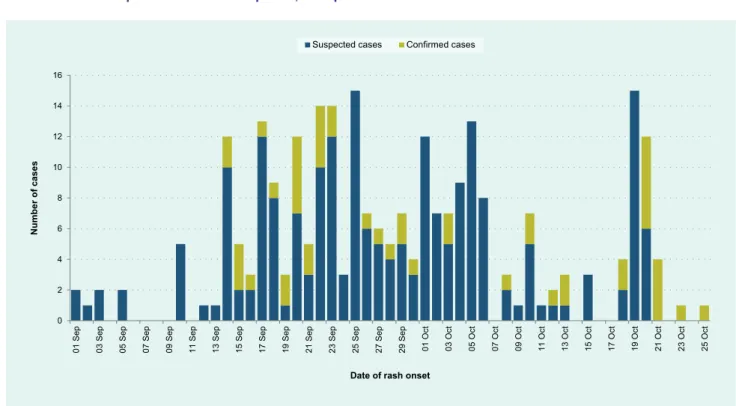
DISCUSSION
The outbreak highlights the vulnerability of the country's ethnic and other geographically dispersed communities to vaccine-preventable diseases. The community's health-seeking behavior and their knowledge about measles were not assessed to understand the reasons for low routine coverage in the affected villages. Persons with HIV aged 18 years or older who had been on ART for at least 36 months at the time of the clinic visit were eligible for inclusion.
In 2014, Vietnam became one of the first countries in the world to conduct an adverse event survey according to the new WHO guidelines. In the second phase, a sample of eligible patients was consecutively selected from each of the selected clinics. The FASTA files were submitted to the Stanford University HIV Drug Resistance Database for interpretation.7 A detailed description of the technical data analysis has been described elsewhere.5.
Objective: To investigate the measles outbreak that spread to Japan and Taiwan and China between March and May 2018 and to investigate the characteristics of the large spread event. Methods: A contact investigation of the index case and a reconstruction of the epidemiological dynamics of measles transmission were performed. The effective reproductive number of the second generation was > 1 for Japan and Taiwan, China.
As part of the sensitivity analysis, we also calculated the number of cases in each generation including +/− 1 day of the prescribed cut-off date. Modified measles is defined by the presence of at least one of the three signs or symptoms described above and laboratory confirmation of measles infection. Of a total of 124 cases including the index case, the route of transmission was unknown for 71 cases.
Because of the large number of transmission events that were tracked very closely, the index case is considered to have acted as the primary case of the superpropagation event. The daily onset of reported measles cases was characterized over time after the onset of illness of the index case on March 14. Partially unfilled boxes for four cases in Taiwan, China represent an uncertainty of disease onset date (i.e. possible range of disease onset date).
It should be noted that the Rn of the second generation was estimated to be >1 for Japan and Taiwan, China. Subsequently, cases ceased in Taiwan, China, and thus, the third-generation Rn was zero. The present study explored the epidemiologic features of a transboundary outbreak of measles that spread to Japan and Taiwan, China in the WHO Western Pacific Region, where great progress has been made toward measles elimination in recent years.3 As of July 2018, Japan was among eight countries and areas in the Western Pacific Region that had achieved measles elimination (in addition to Australia, Brunei Darussalam, Cambodia, Hong Kong SAR [China], Macau SAR [China], New Zealand and the Republic of Korea).
The clinical diagnosis of the index case was made rapidly on the same day of the onset of rash, and.
